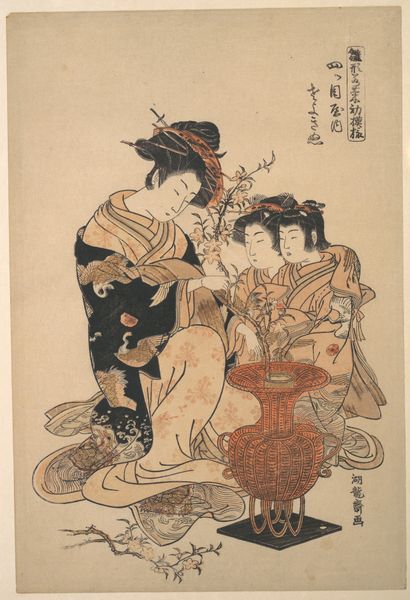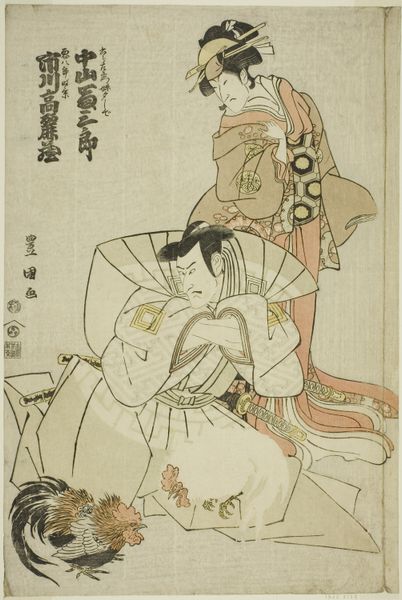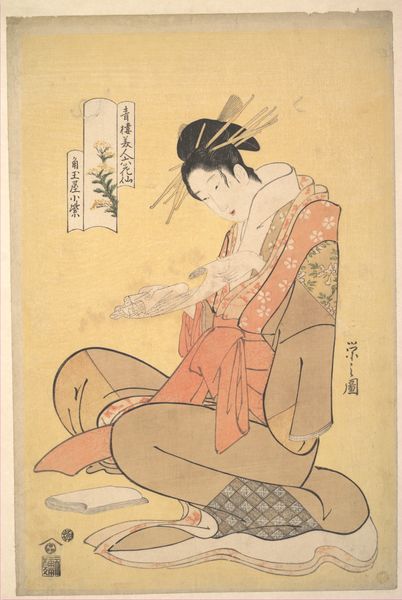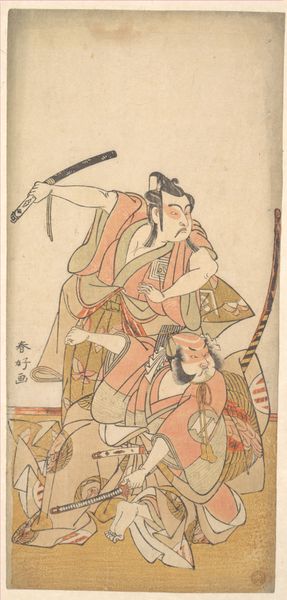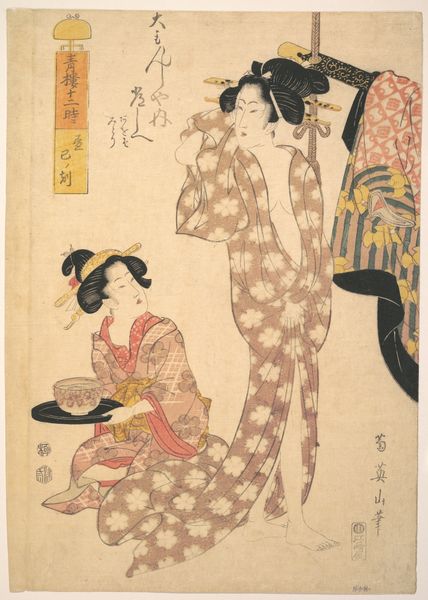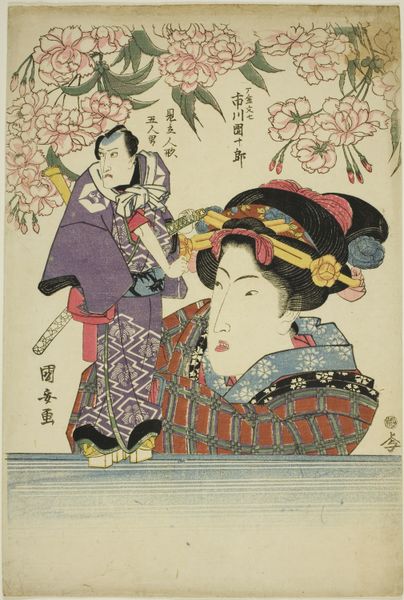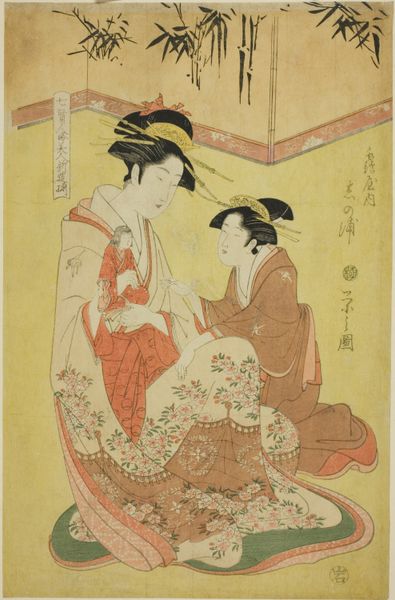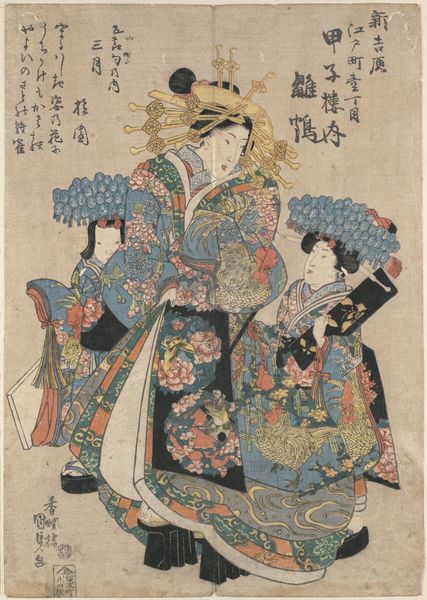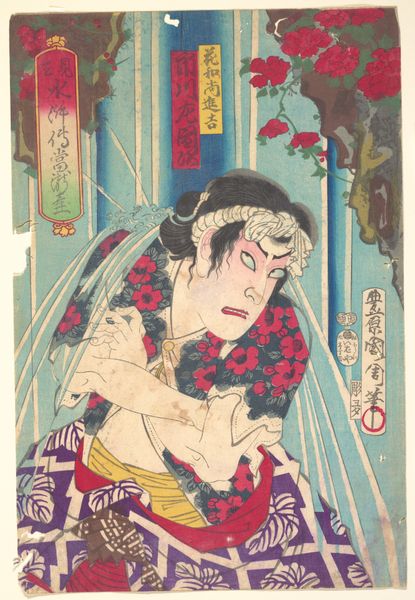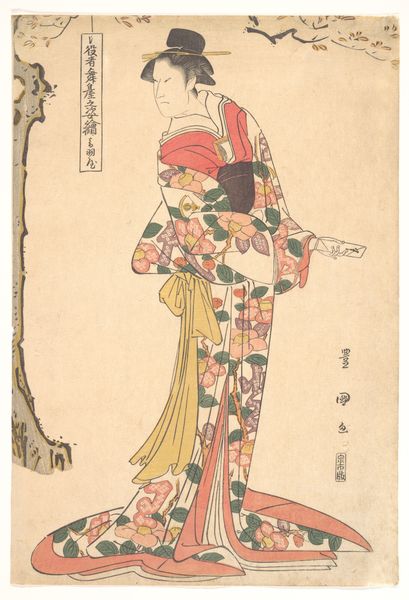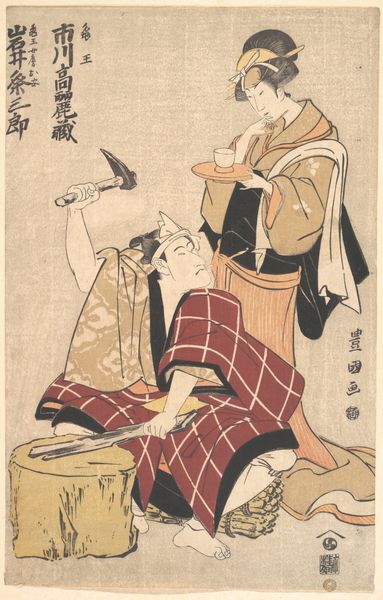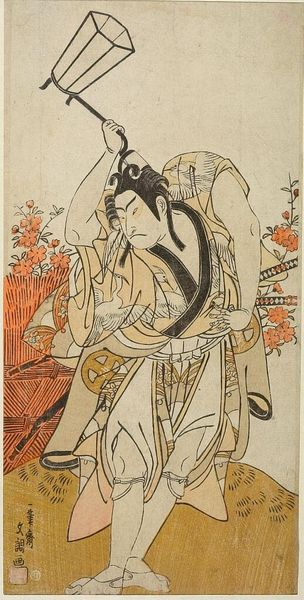
print, woodblock-print
#
portrait
# print
#
asian-art
#
ukiyo-e
#
figuration
#
woodblock-print
#
genre-painting
#
erotic-art
Dimensions: height 388 mm, width 261 mm
Copyright: Rijks Museum: Open Domain
Curator: Immediately I get this sense of intimate quiet, despite all the ornamentation. It's like a paused moment within a very specific social world. Editor: Right, and what we're looking at is "Geisha en kamuro", a woodblock print made around 1811 by Utagawa Kuniyasu. You can currently find this print here at the Rijksmuseum. Curator: Utagawa captures this world so vividly! Look at how the geisha is portrayed: the detailed kimono, the elaborate hair ornaments… it speaks volumes about her status, but also about the constraints placed upon women in that society. The erotic element of Ukiyo-e is very subtle here, more suggestion than anything explicit. It's less about pure voyeurism and more about power and performance. Editor: It’s true, the details feel incredibly lush and almost oppressive in their artifice, isn't it? My eye keeps going to that little girl peeking over the box. There’s something about her direct gaze, compared to the downward glance of the geisha, that's oddly disconcerting. She gives a silent judgement. It creates a narrative tension; a silent observer reflecting on these complexities within this world of ukiyo-e and of gender performance. Curator: I find myself thinking about the colonial gaze embedded within Western appreciation of art like this. How do we, as modern viewers, navigate those histories and avoid perpetuating problematic fetishizations of "exotic" women? How do you read art and disentangle yourself? Editor: Absolutely, it's like these questions become an inherent part of viewing it now, impossible to ignore. It challenges the ease with which we can consume an image like this and ask if they are lost. Curator: Viewing this today is such a multilayered experience, isn't it? We’re forced to grapple with the historical context, our own biases, and the ever-present question of representation. Editor: For me it triggers so much consideration of past histories and present interpretations. But what will the work be read like in future? Curator: I guess we'll leave that up to future generations, then. A mirror reflecting our evolving social conscience, one print at a time.
Comments
No comments
Be the first to comment and join the conversation on the ultimate creative platform.
